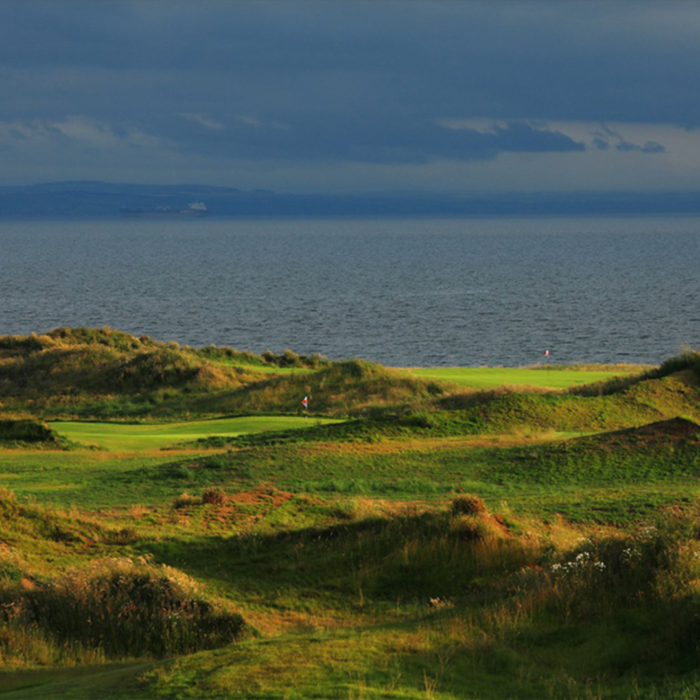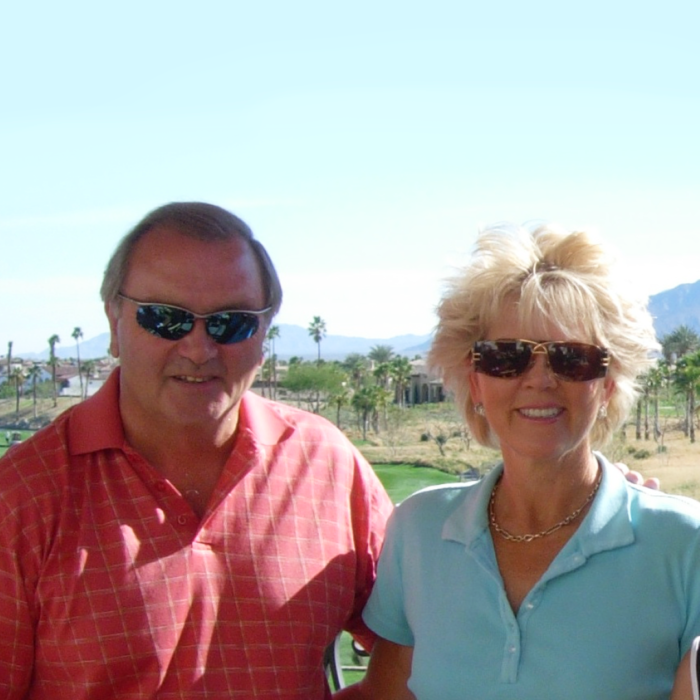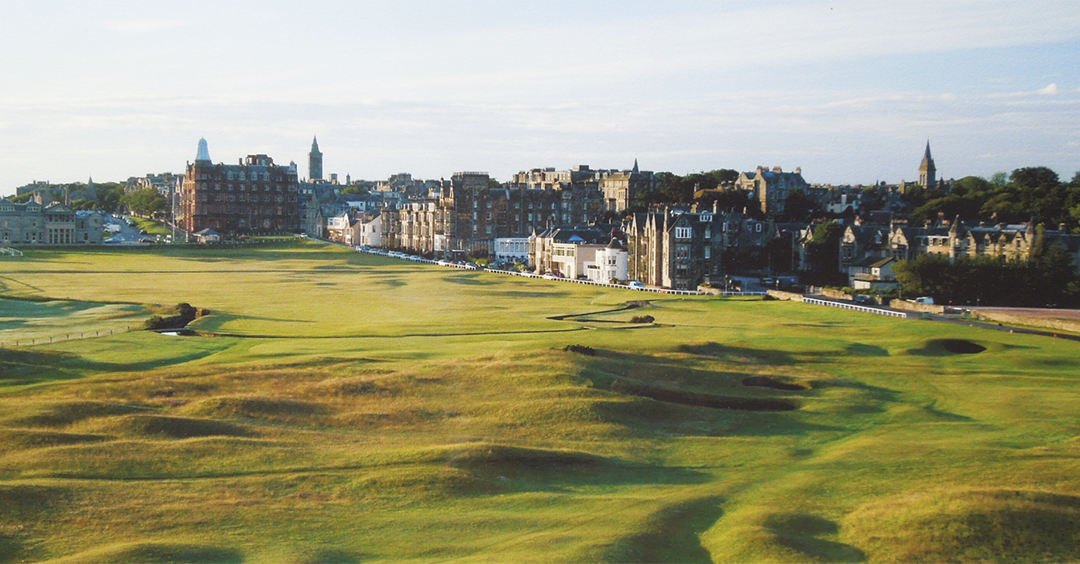The St Andrews Experience
It’s always exhilarating to pull into the Auld Grey Toon and see the hallowed ground of the Old Course spread out with quiet dignity on your left. We had a set agenda that included meeting with the captains of both St Regulus Ladies Golf Club and The St Rule Club.
At St Reg’s both the incoming and outgoing captains are named Moira and Kevin and I got to meet them both! The current captain is Moira Hall and she greeted us upon our arrival at 9 Pilmour Links, a few steps from the Rusacks Hotel. We learned that even though St Regulus was founded in 1913, Moira Wilbraham, the vice-captain said, “When I took up golf 25 years ago women were not encouraged to play.”
“How is that possible, if your club was formed over 100 years ago?” I queried.
Moira clarified, “Men were not encouraged to play with women…not with their wives, anyway, as the men were out playing golf, to ahem, get away from the missus.”
Just a short time later, we were to meet with Janet Winter, captain of The St Rule Club. It was established at the end of 1896. From Janet we learned St Rule is not a club with just a golf section. They have a book club, gardening club, and in the winter months weekly meetings are held for Arts & Crafts and bridge. Their enviable location at 12 The Links has a stunning view of the Old Course and West Sands — the very beach where Chariots of Fire was filmed.
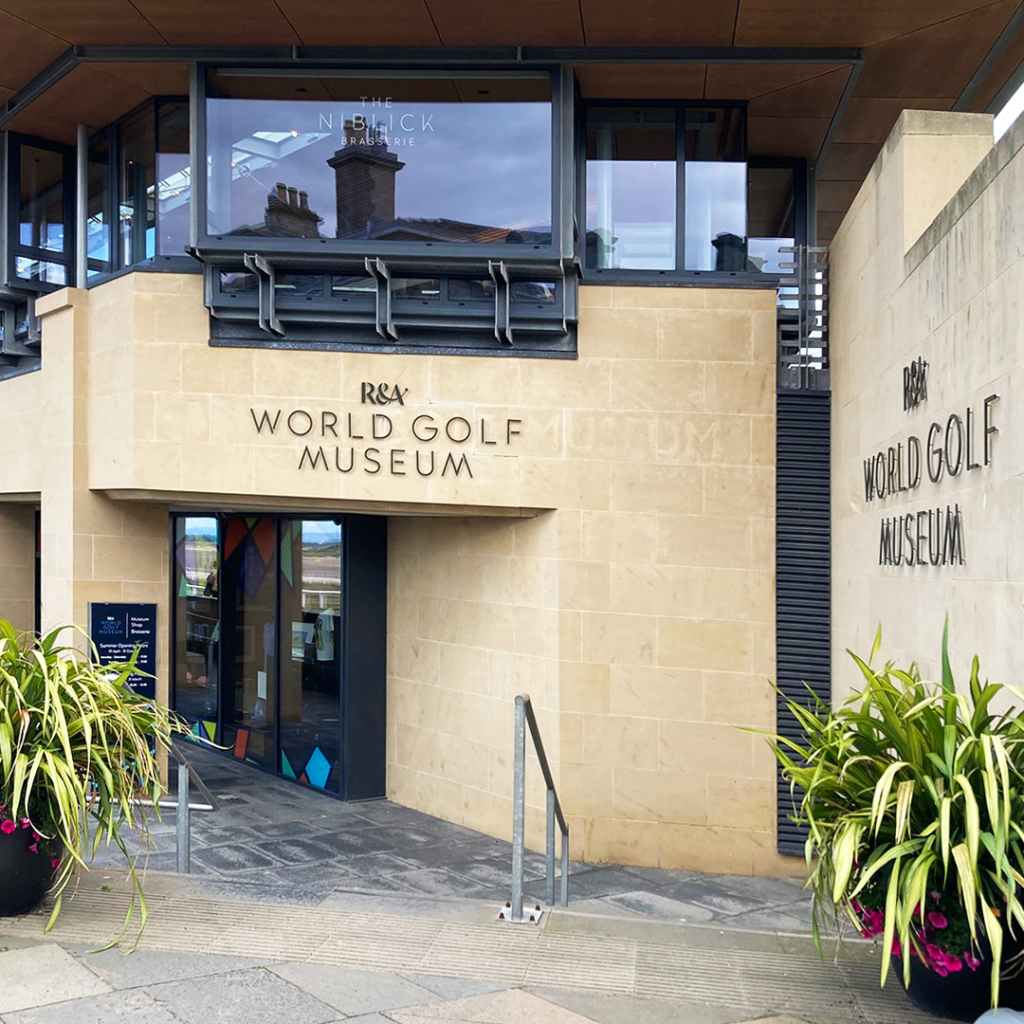
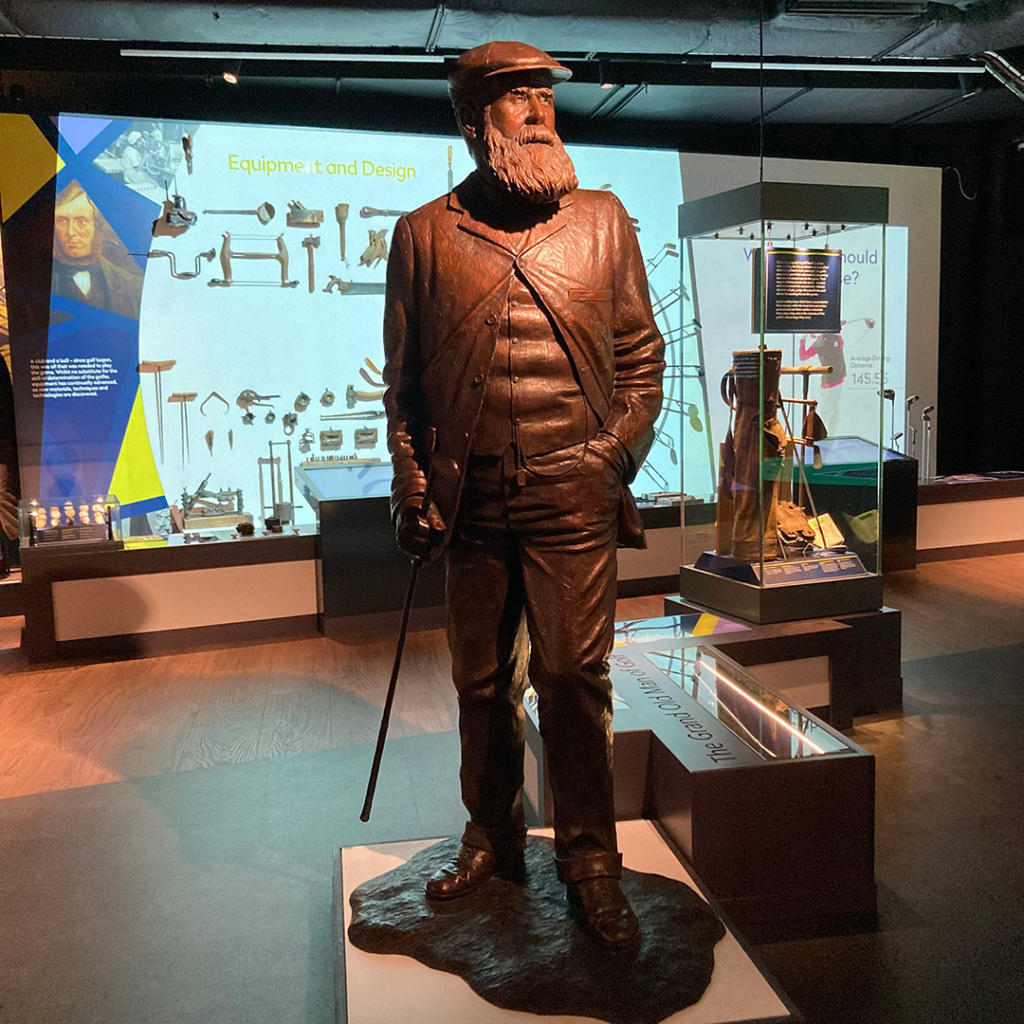

Our last meeting of the day was with Angela Howe, the Museum & Heritage Director of the World Golf Museum. She’s responsible for the running of the museum and oversees the management of the collections in the Royal & Ancient Golf Club of St Andrews. It’s a pretty big job, especially since the museum was completely re-imagined to introduce an exciting, interactive presentation of the golf heritage experience.
The exhibits are organized in a very compelling way exploring concepts like “Ball and Stick Games” and “Clubs and Societies.” There is a fascinating section called “Women to the Fore” and a special exhibit of Seve: His Life Through the Lens by David Cannon. It includes many of the most iconic photographs of Seve Ballesteros, like the jubilant scene when he won The Open in 1979, wearing his trademark navy blue V-neck sweater. David captured this intensely euphoric moment when Seve sunk the winning putt. The crowd would have been roaring and so was he. Seve was crowned Champion Golfer of the Year three times — 1979, 1984, 1988.
One of the best panels at the museum states:
Golf is Everywhere. It is staggering to learn that there are 40,000 golf courses spread around the world from remote islands to bustling cities. We are reminded that golf continues to flourish around the world and that it is a sport for life. And right here at the Home of Golf, the R&A aims to make golf more accessible, appealing and inclusive.
The World Golf Museum certainly reflects that goal.
We had heard good things from our clients who were attending the Open Championship in July about a new restaurant called Lupo’s. The establishment takes its name from their patron-wolf, and a vibrant mural-size painting of the head of the animal creates an amazing atmosphere in this trendy upstairs restaurant.
When we saw Little Beauty on the wine list, we ordered it straight away. But when told it was out of stock we were offered Little Darling. This organic Sauvignon Blanc, also from Marlborough, was perfect with our pan-seared Branzino.
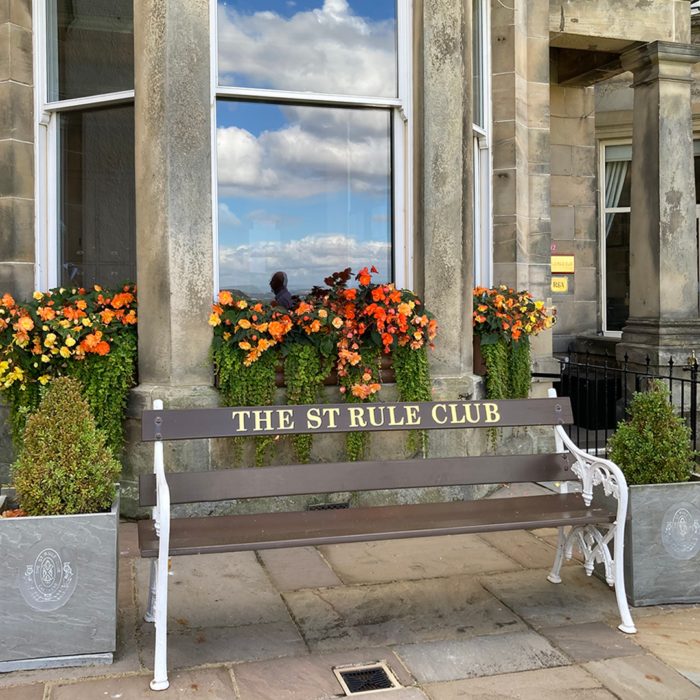
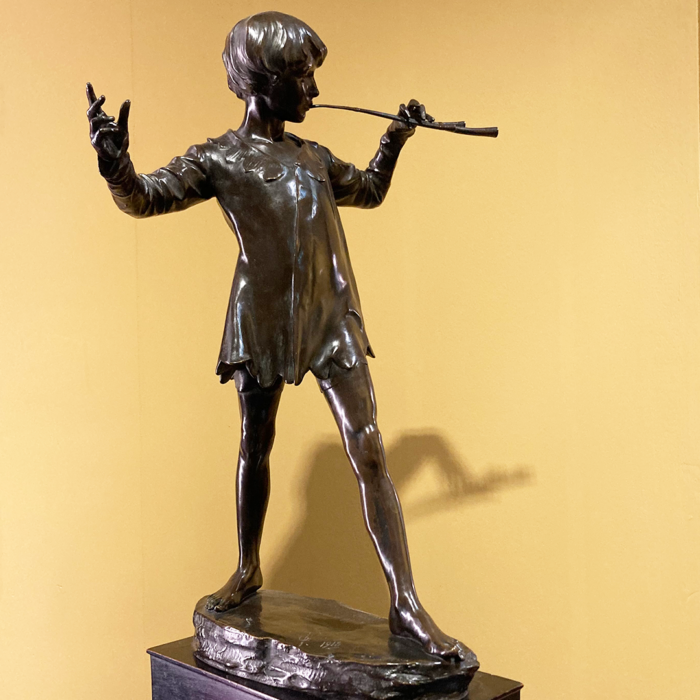
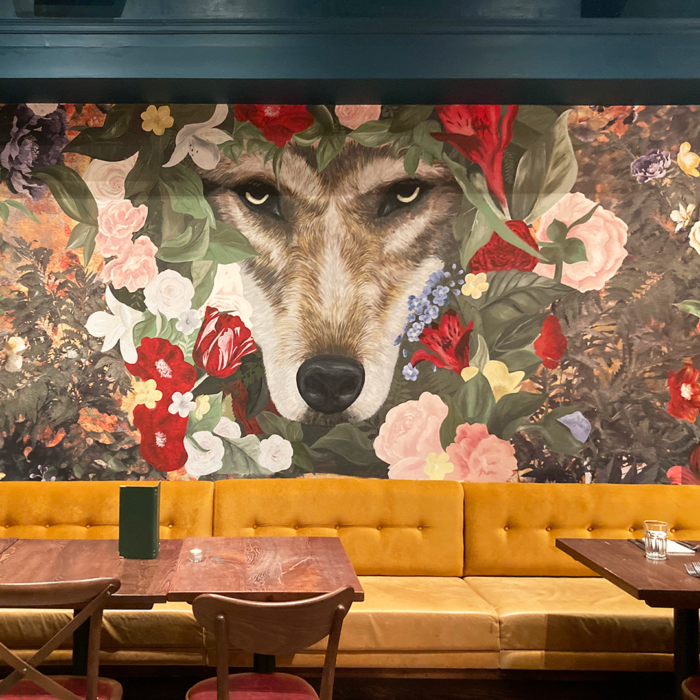
We were lucky to get into Little Italy, a reliably good restaurant for years. The place was packed and the food was fabulous. Kevin had a homemade ravioli stuffed with lobster and crab and I had a veal dish made with Marsala wine, sage and cream sauce, topped with Parma ham. Accompanied by a bottle of Ca’Bolani Pinot Grigio. You can’t go wrong here.
When I finally had a few hours to just meander around the charming town, I took a leisurely stroll over to the Wardlaw Museum, which is part of the University of St Andrews. Henry Wardlaw (died 6 April 1440) was a Bishop of St Andrews and a founder of the university.
Displays showcase the extraordinary art, history, science and natural history collections spanning six centuries since the university was founded in 1413. A very informative panel answers the question: Why St Andrews? It states:
Already home to Scotland’s largest cathedral, with its important library, St Andrews attracted scholars from across Europe for centuries before the University was formally founded.
In 1410 a small group began teaching in the town under the authority of Bishop Henry Wardlaw, but only the Pope could grant university status.
Western Europe was in political and religious conflict, including dynastic wars on a grand scale and a major split in the Catholic Church. Combined with Scotland’s increasingly bold assertion of itself in Europe there was a strong case for a university here. In 1413 Bishop Wardlaw and King James I of Scotland secured approval from the Pope, and Scotland’s first university was founded.
One delightful surprise was the enchanting bronze of Peter Pan. The statue was presented to the University by JM Barrie, the creator of the famous character, when he was Rector in 1922.

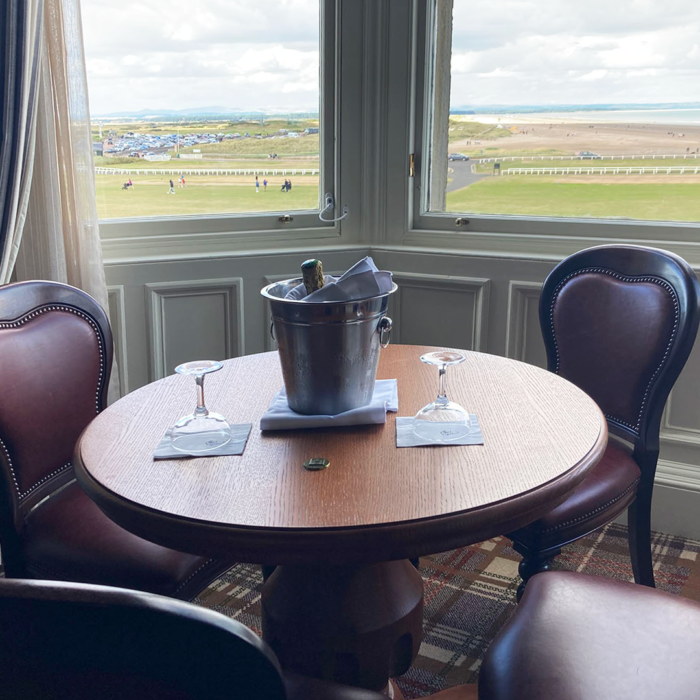
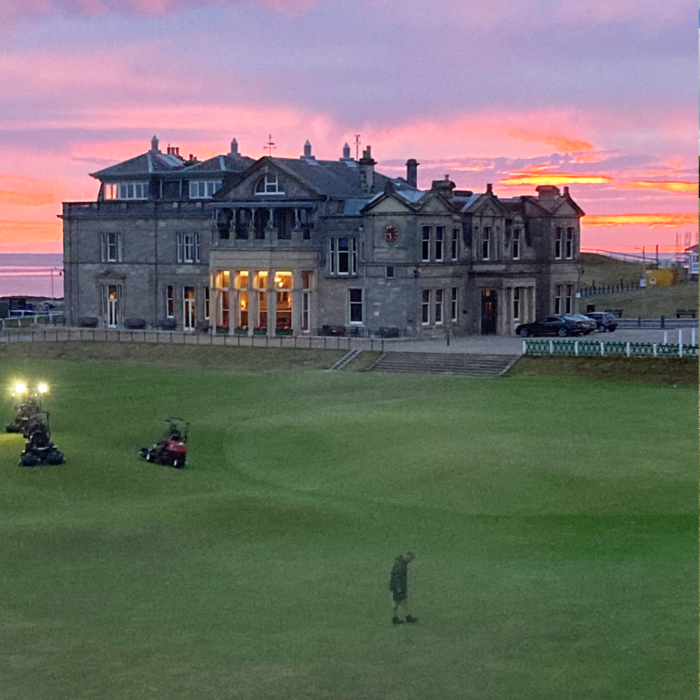
This day was capped off with dinner at Rusacks with our clients who just arrived and checked into the hotel. We’ll be staying there ourselves the next night to have our own first-hand experience of yet another property in the Marine & Lawn portfolio.
When it was our turn, we checked into a magnificent suite — bottle of prosecco waiting — chilled to perfection. We consumed it pronto in dainty old-fashioned champagne glasses— admiring the view of the Old course.
I was delighted to find a selection of books in our sitting room including Roger McStravick’s: St Andrews in the Footsteps of Old Tom Morris. I’m privileged to own a copy that I keep in my golf library at home. Roger is a brilliant award-winning writer and he is currently the Editor of the British Golf Collectors’ Society journal — Through the Green. He contributes a “Letter from St Andrews” for the Golf Heritage Society’s quarterly journal called The Golf. It’s great to feel the connection, through Roger, to the Home of Golf on a regular basis.
On Sunday we played golf at Panmure Golf Club. I had heard many years ago that this is where Ben Hogan practiced in 1953 before he won the Open at Carnoustie. He only played in the Open once and never came back to the UK again. At the time, Hogan was the reigning Masters and U.S. Open Champion.
We learned from Scott Grant in the golf shop, while picking up our score cards and a course guide, that the pot bunker front right of the green on hole #6 was Hogan’s idea so it is named after him. However, it was the flat hole #17 where he practiced the most. He kept a mower and hand-cut the green himself.
As we made our way to the first tee, I was astonished to see a scallop, emblazoned in rich pink on a 4-foot high boulder. This shell is the emblem of Panmure Golf Club.
I found it very ironic that I am currently reading The Pilgrimage by the Brazilian novelist Paulo Coelho. Written in 1987, full of enchantment and enlightenment, it is about his experiences as he walked the Road to Santiago de Compostela across northern Spain. On the cover of my copy is a scallop shell — the most well-known symbol associated with the Camino de Santiago. It is this shell that accompanies the pilgrims on their quest for self-knowledge and spiritual mastery they are seeking on the Road.
And here is a bright pink one on the rock at Panmure! How did this come to be? The story goes like this:
This day was capped off with dinner at Rusacks with our clients who just arrived and checked into the hotel. We’ll be staying there ourselves the next night to have our own first-hand experience of yet another property in the Marine & Lawn portfolio.
When it was our turn, we checked into a magnificent suite — bottle of prosecco waiting — chilled to perfection. We consumed it pronto in dainty old-fashioned champagne glasses— admiring the view of the Old course.
I was delighted to find a selection of books in our sitting room including Roger McStravick’s: St Andrews in the Footsteps of Old Tom Morris. I’m privileged to own a copy that I keep in my golf library at home. Roger is a brilliant award-winning writer and he is currently the Editor of the British Golf Collectors’ Society journal — Through the Green. He contributes a “Letter from St Andrews” for the Golf Heritage Society’s quarterly journal called The Golf. It’s great to feel the connection, through Roger, to the Home of Golf on a regular basis.
Maule & the Scallop Shell
The Coat of Arms of Guarin Le Jeune de Maule, was incorporated into the Panmure Family Crest. The Escallop was adopted by Panmure Golf Club with the gracious permission of the Earl of Dalhousie.
We are often asked by Members, Guests and Visitors alike why our Club uses a scallop shell as its emblem.
Maule is the family name of the Lords and Earls of Panmure. There are strong associations between the name and Angus with, for example, street names in Monifieth and Carnoustie. Carnoustie is twinned with the town of Maule.
Guarin Le Jeune de Maule came from France with the Normans and indeed may have fought at the Battle of Hastings (1066). His son Robert de Maule accompanied David I to Scotland when he succeeded to the throne in 1124. Sir Thomas Maule (1521 – 1600) was Ambassador to France and fought at the Battles of Hadden Rigg (1542) and Pinkie (1547). Patrick Maule (1585 – 1661) was a courtier to King James VI and Charles I. He was created Earl of Panmure and Lord Maule of Brechin and Navar in 1646 and was granted lands stretching from Fettercairn to the Tay Estuary, including all the land now taken up by Golf Courses.
James Maule, the 4th Earl (1658 – 1723), was a Jacobite who fought at Sheriffmuir, fled to the continent and thus lost the family estates. His nephew, General William Maule (1700-82) returned, became a loyal soldier, bought back the estates and recovered the Earldom. However, dying without children his estates were eventually divided between a cousin George Ramsay, the 8th Earl of Dalhousie (d.1787) and George’s second son, William. In 1782, William assumed the name Maule and was created Baron Panmure of Brechin and Navar, the 1st Lord Panmure.
The course is a traditional links. Now and then you see a train zooming by and other times you see cows grazing lazily. At Panmure, a couple of miles from Carnoustie Golf Club, you will find tall pine trees along with a very dunes-y landscape. It is the kind of course you could play every day.
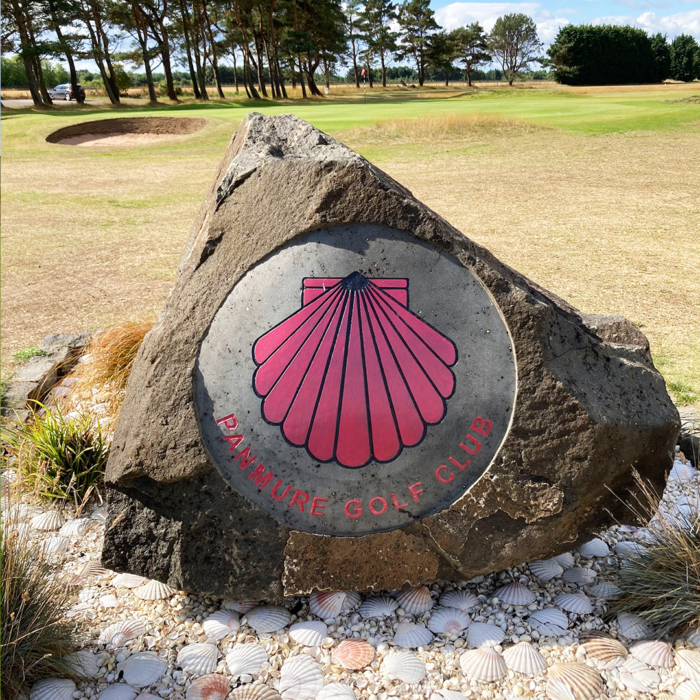


For dinner we met up with clients at The Locker room at The Russell Hotel — a very intimate private space. All the names on the lockers are winners of the Open at St Andrews. Lots of good food and laughs. The room only seats 10 people.
Our only other round of golf in the St Andrews area was at Dumbarnie Links. I waited years to play this new course with very high expectations. They were met and then some. We started off with rain on the first hole but by the third we were putting the umbrellas away and could concentrate on enjoying the course. The layout, designed by Clive Clark, former Ryder Cup player-turned-developer and golf architect was fun, memorable, and challenging. Every hole engaged all your senses and at times it seemed like we were the only people on the course due to the clever routing and use of the generous amount of land.
Holing out the last putt on the 18th leaves you feeling like you want to come back. In a word — it is seductive.
I can’t think of anything that would make the whole experience more special except running into Clive himself! And lo, there he was with his lovely wife, Linda, as we were just ordering some lunch in the clubhouse. Now that was a thrill. They both said they remembered meeting me years ago at the Hideaway in La Quinta, Ca. Even if they didn’t, they insisted they did! That’s class.
“I have no doubt that Dumbarnie will soon come to stand along with Kingsbarns as the two courses (after the Old) that every serious St. Andrews pilgrim will want to play.” ~ George Peper, Links Magazine
